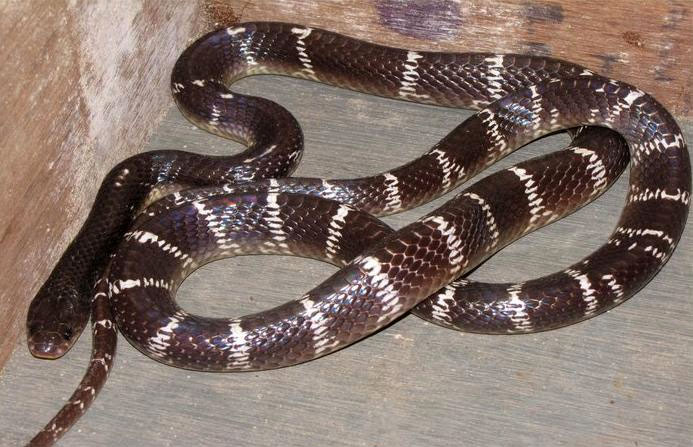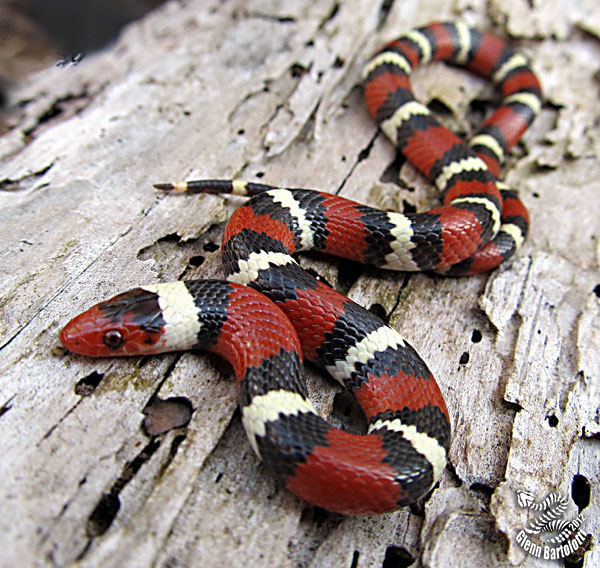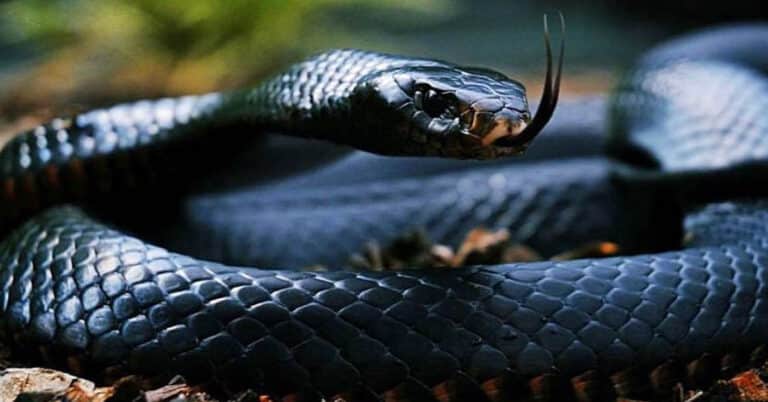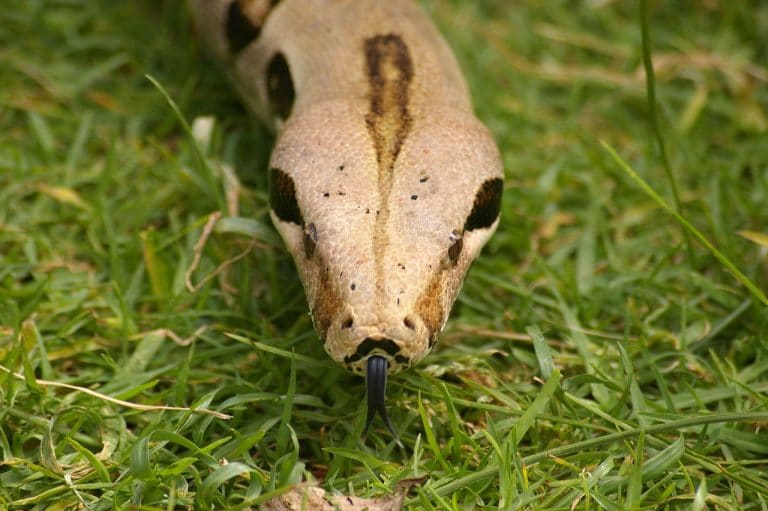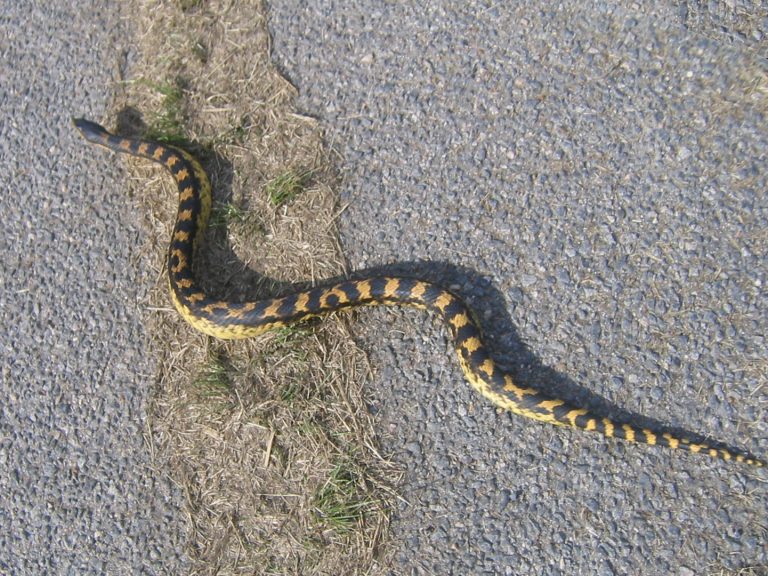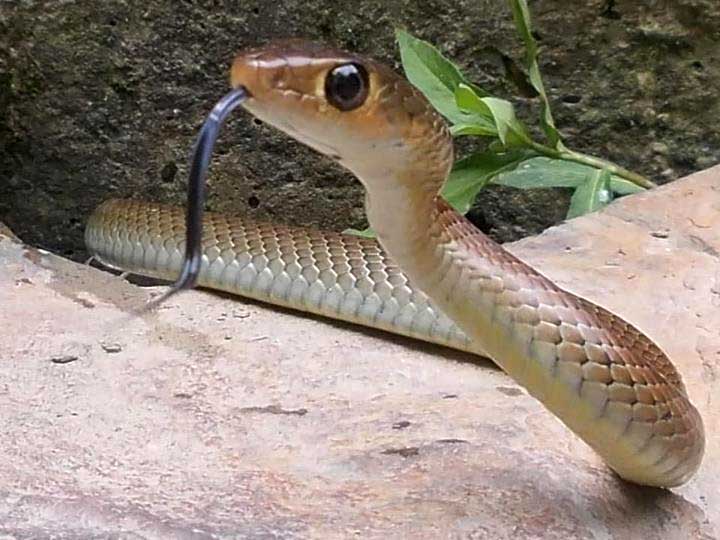Common Krait
Scientific Classification
| Kingdom: | Animalia |
| Phylum: | Chordata |
| Subphylum: | Vertebrata |
| Class: | Reptilia |
| Order: | Squamata |
| Suborder: | Serpentes |
| Family: | Elapidae |
| Genus: | Bungarus |
| Species: | B. caeruleus |
| Binomial name: | Bungarus caeruleus |
The Common Krait Bungarus Caeruleus is a genus of highly venomous snakes. You can see Kraits in the jungles and nearby areas of the (Indian) subcontinent. These species are a part of the ‘Big 4’ poisonous snakes, responsible for the maximum number of snake bite casualties in India. The snake is comparatively small in size. The Indian Krait happens to be the most venomous snake in the country, There is a lot of mystery surrounding Krait snake bites. The bite is believed to be so painless that if a person is bitten in his sleep, there is a big possibility that he will die in his sleep. Death from Krait bites usually results in respiratory failure of the victim. The Krait venom contains very potent pre and post-synaptic neurotoxins which usually affect the nerve ends in the synaptic cleft of the brain.
There is an unexplained mystery of why we find Kraits in beds of persons sleeping on the floor. Some believe that the snake come to lick salt from the human body. This theory is not substantiated in any way. Another opinion is that these snakes seek the warmth of the human body!
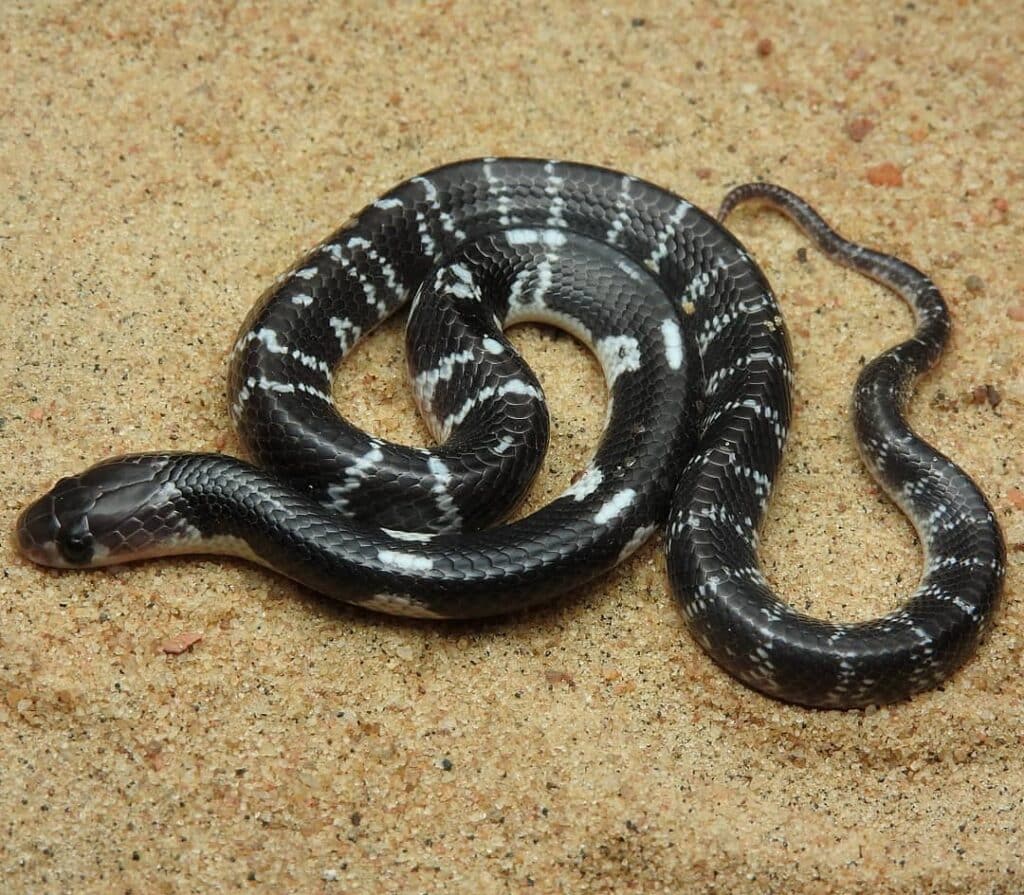
Anatomy
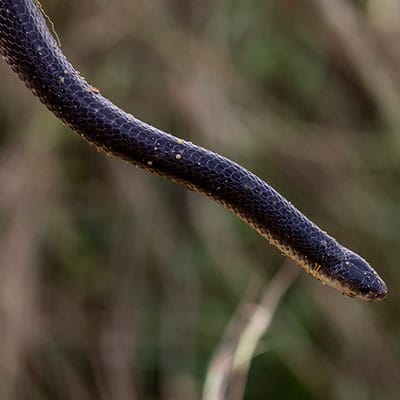
The average length of the Common Krait is around 3 feet (0.9 meters) These snakes can very well grow up to 5 feet and 9 inches in length (1.75Meters). The males are longer than the females with their tails proportionally longer. The head is flat and the neck is not discernable. They have cylindrical bodies that taper down to the tail. The tails are short and rounded. They have small eyes with rounded pupils which are not distinguishable, and so the eyes appear as black. They possess normal head shields. There are no loreals. Four shields are located on the margin of the lower lip. The third and the fourth super-ocular shields touch the eye. The scales are very polished. There are 15 to 17 rows of scales. The vertebral scales are clearly enlarged and of hexagonal shape. The number of ventral scales varies between 185 and 225. The caduals range between 37 and 50, in number.
These snakes are generally bluish black or black in color. There are around 40 white colored, thin crossbars on the body. They may be indistinct or absent in the anterior parts. The patterns are well defined and complete in the case of young snakes. In the case of older snakes, instead of white lines, we may find a series of connected spots. You may find a very distinct spot in the region of the vertebrae. On the pre-ocular scale, you may find a yellowish white patch. The upper lips and belly are white colored. They have pinkish or red colored tongues.
These snakes have prehensile tails. They are short and pointed. The white bands are present and more distinct than in the rest of the body.
Behavior
You can can quite frequently find the Kraits in or near human settlements. They have a special ability to hide in narrow places. Basically terrestrial, they can climb well when in need of shelter or when hunting prey. They are not aggressive during the daytime. When threatened in daytime, the snake will curl like a ball, hiding its head. When disturbed at night, they desperately try to escape into dark hiding places.
The Common Krait snakes live in a variety of habitats, including plains, hills, woods, forests, dense vegetation, agricultural lands, caves, trees, places having mounds and water bodies. They appear to prefer wet areas to forage for food. Being, nocturnal, they lay concealed in day time debris, litter, stone piles, logs and dry mud holes.
As a Pet
Breeding
These snakes are almost impossible to breed in captivity. The Thai authorities are involved in a project that involve breeding of venomous snake species, the results have been disappointing as far the Krait species are concerned.
Housing
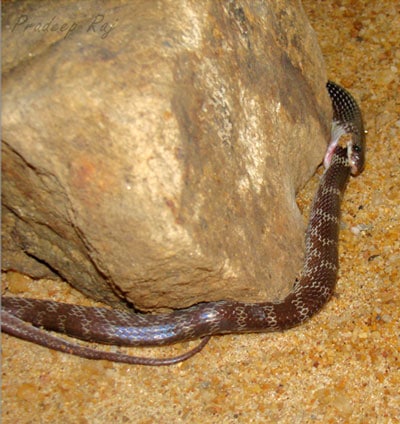
Since Kraits show cannibalistic tendencies, it is better to keep them in separate enclosures. You would do well to keep the snakes in glass-fronted wooden boxes. The enclosure can be 3 x 1.5 x 1.5 feet for adults. You can provide a water bowl and a hide box to give them the feeling that they are secure. Newspaper substrates are ideal since they absorb water or other fluids rather quickly. Soil substrates and live plants in the cage could bring in germs and ticks. It is better to avoid these. Wash and dry anything that you introduce into their enclosure. Clean the cages at least once a week. You can use highly diluted, mild disinfectants to clean the corners and edges of the enclosure.
Remove shed skins from the enclosure since they may attract ants. The snakes are nocturnal. You can seldom find them in their habitats at day time. They come out in search of prey at night. The case is the same in captivity. They come out of their hide boxes only at night, and start exploring the environment after the lights are switched off. It is better to keep the baby snakes and juveniles in secure plastic boxes, since they are very agile and try to escape at every opportunity.
Lighting
They do not need any special lighting. Maintain the room temperature at 95degree F. Use a low power red light in case you want to watch your pets at night. Remember, they are nocturnal and only active at night.
Food
Apart from rodents, lizards, toads and frogs, the Common Krait feeds on all snakes, poisonous or non-poisonous, including other Kraits. In captivity, it is better to give them mice twice a week. Never keep two Krait snakes in the same enclosure unless they are of the same size. Remember that Kraits are ophiphagus and they have no compunctions about eating other snakes, including their own kind.
Handling
These snakes are very dangerous. The behavior of the Krait is totally unpredictable. The venom of the snake is very potent and often, the bite can prove fatal. With anti-venom in short supply these days, this could pose quite a problem. Even to keep these snakes, you need experience. Handling the snake is strictly No, No for amateurs.

Having discovered a fondness for insects while pursuing her degree in Biology, Randi Jones was quite bugged to know that people usually dismissed these little creatures as “creepy-crawlies”.

